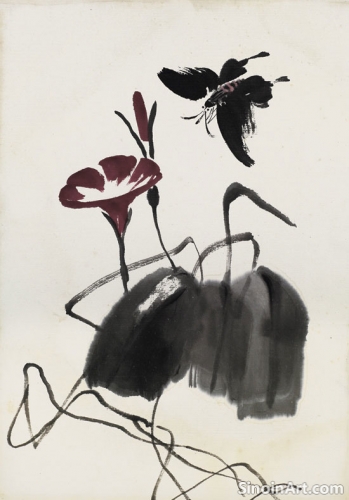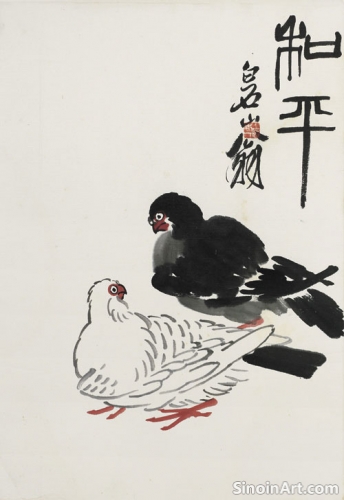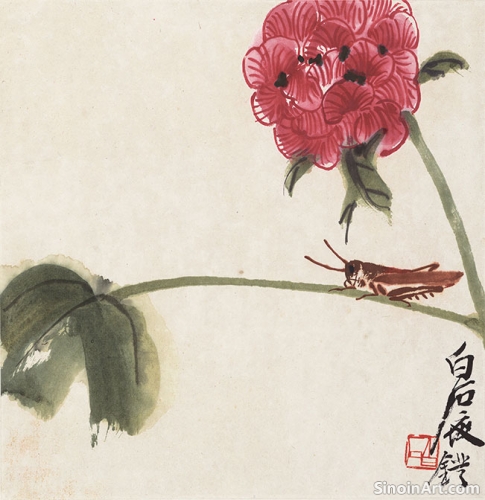Xieyi and the Concept of "Shu Hua Tong Yuan"
|
The phrase "Shu Hua Tong Yuan" (書畫同源), meaning "calligraphy and painting share the same source," is a foundational concept in Chinese art and deeply relevant to Xieyi. It highlights the shared tools, techniques, and aesthetic principles between calligraphy and painting, emphasizing their interconnectedness. The same tools and skills are shared across both disciplines.  The emphasis on calligraphic brushwork in Xieyi is a direct result of this principle. The artist uses the same techniques of line drawing, pressure variation, and ink control that are used in writing Chinese characters. The calligraphic nature of the brushstrokes becomes the defining characteristic of the Xieyi technique.  Both disciplines share the same appreciation for spontaneity, rhythm, and the expressive potential of line. Both aim to convey the inner spirit of a subject, expressing the artist's intentions and creative ideas through the language of brush and ink. They are both about inner expression and emotional communication.  The ideal of the literati artist, one who is skilled in both calligraphy and painting, reflects this unity between the two art forms. They were not considered two separate disciplines, but two sides of the same coin. The literati artists excelled in both areas and considered them to be intertwined. Understanding "Shu Hua Tong Yuan" is essential to appreciating the unique qualities of Xieyi, seeing the brushwork as something more than merely a method of applying pigment to paper. The brushwork carries its own weight of meaning and expression. It is the cornerstone of the technique. |
Tag : calligraphy source, brushwork origins, art interconnectedness, shared principles
Related information
- The Use of "Blank Space" in Xieyi
- Xieyi Painting and the Depiction of Animals
- The Enduring Significance of Xieyi Painting
- The Role of Color in Xieyi: Subtlety and Emphasis
- Xieyi Figures: Capturing the Essence of Humanity
Liúbái (blank space) is a vital element in Xieyi painting, creating balance, depth, atmosphere, and encouraging active viewer participation while reflecting philosophical concepts of emptiness and possibility. It's as important as the inked areas.
Animals are a common subject in Xieyi painting, used to express emotions, convey philosophical ideas, and capture the essence of the animal with simplified forms and spontaneous brushstrokes, relying on cultural symbolism and careful observation of the natural world, often as metaphors for the human condition.
Xieyi painting's enduring significance lies in its rich history, philosophical depth, and emphasis on personal expression, spontaneity, and the pursuit of essence, connecting with audiences through its timeless aesthetic, connection to nature, and human spirit, while contemporary artists ensure its continued practice, evolution, and relevance in the world of art.
While often associated with monochromatic ink washes, color plays a significant role in many Xieyi paintings. When color is used, it is often applied subtly, with careful consideration for how it can enhance the overall composition. Color serves not as a literal depiction of reality but as an expressive tool that accentuates the subject’s spirit.
While less common than landscapes and flowers/birds, figure painting (人物画, renwuhua) also has a place within the Xieyi tradition. These works often focus on capturing the character and spirit of the individual rather than simply portraying a likeness. The focus is on expression and inner qualities.